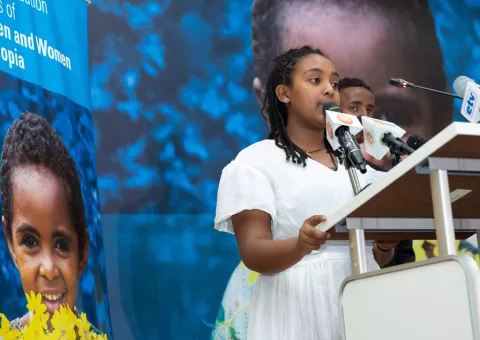Humanitarian Action for Children 2019
Ethiopia
Highlights
Displacement due to conflict is at crisis levels in Ethiopia, and the number of affected people is expected to increase as the country continues to undergo political transformation and democratization. As of October 2018, 2.8 million people,1 including 1.5 million children, were displaced, and Ethiopia has the second highest number of refugees and asylum seekers in Africa at 920,000.2 The peace agreement signed with Eritrea led to more than 14,000 new arrivals between 12 September and 20 October and a continued influx is expected for 2019.3 Refugees and internally displaced persons, particularly women and girls, require protection assistance due to reports of the inequitable distribution of humanitarian resources based on ethnicity, as well as violence, rape and intimidation. Protection monitoring remains limited in Ethiopia. Seasonal climate-related floods and droughts affect specific regions, compounding acute food insecurity, malnutrition and water shortages, mostly in pastoral and highland areas. Throughout Ethiopia, nearly 8 million people,4 including 4.2 million children,5 require food assistance and 370,000 children require treatment for severe acute malnutrition (SAM).6 Disease outbreaks, including of measles and acute watery diarrhoea, pose an ongoing threat. The limited number of operational partners, insecurity and inaccessibility due to poor infrastructure continue to hamper humanitarian assistance.





